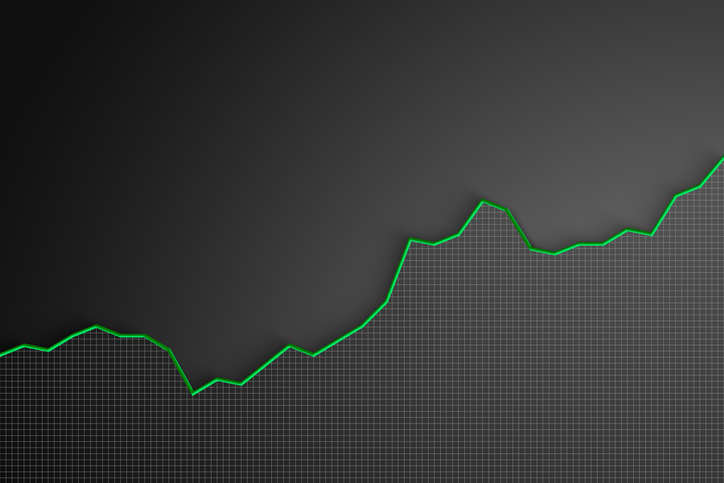How to Create Retirement Income That’s Driven by Cash Flow
Using a combination of dividends and structured notes in your retirement portfolio can offer liquidity, income and risk mitigation.


As the U.S. economy teeters on the brink of a recession, you may be wondering how you can create a retirement income portfolio that will stand the test of time. Like many other pre-retirees or retirees, you were probably spooked by the stock market in 2022.
If your retirement income strategy involves yearly withdrawals from your investment portfolio to fund your lifestyle, a stock market decline like this one can negatively impact you. That’s because withdrawals on top of market declines can permanently impair your nest egg. That could mean reducing your lifestyle to avoid running out of money.
One way around this dilemma is to build a portfolio that creates a consistent source of reliable cash flow while allowing for capital appreciation potential. This strategy, coupled with a retirement plan based on a realistic assessment of retirement spending and optimized Social Security claiming, lays a foundation for success.

Sign up for Kiplinger’s Free E-Newsletters
Profit and prosper with the best of expert advice on investing, taxes, retirement, personal finance and more - straight to your e-mail.
Profit and prosper with the best of expert advice - straight to your e-mail.
This article will discuss how an income-driven approach to retirement planning works as well as the benefits of employing it in your retirement income portfolio.
Establishing a Realistic Retirement Income Plan
To create a realistic retirement income plan, there are specific steps that place cash flow at the center of your retirement planning process, while avoiding chasing performance. These three steps are:
- Estimating your specific income needs based on your anticipated retirement lifestyle. This budget—or spending plan—should include non-discretionary and discretionary expenses. You’ll also want to cover other contingencies that arise in retirement, such as inflation, taxes and rising medical costs in later retirement.
- Optimizing Social Security and other sources of income involves determining what sources of income you'll have as well as the best timing and sequence to activate those sources of income.
- Filling the income gap is then very simple. You subtract your anticipated income from the anticipated expenses to obtain that number. While there are many ways to generate this income, one includes an approach based on multiple dividend strategies and structured notes, which will be explained in the example below.
How Cash-Flow-Driven Retirement Planning Works
Let’s say that you’re preparing to retire. You’ve got an income need of $100,000 before taxes, to which a 4% year-over-year inflation rate is applied to account for the inevitable inflation that will occur during your retirement. You and your spouse will claim a Social Security benefit of $64,000 a year. That creates an income gap of $36,000 a year, which needs to be generated from your $1 million tax-deferred IRAs.
There are many ways to generate this $36,000 to fill the income gap. Many advisers use fixed index annuities. Unfortunately, they lack liquidity and frequently carry high fees.
Dividend stocks and structured notes are a viable alternative to a fixed index annuity. Dividends from growing companies with a proven history of increasing their dividend payments over time offer income and dividend growth to offset inflation. You can use structured notes to fill this gap. Structured notes are debt instruments with a derivative component. Available through financial institutions, structured notes are available in a variety of maturities and styles.
The interest rates associated with structured notes fluctuate based on market factors, interest rates and other variables. Equity-linked structured notes such as these are associated with a particular market index, such as the S&P 500, Dow Jones Industrial Average and Nasdaq 100.
Structured notes come in several different styles. These European-style equity-linked structured notes incorporate a feature known as an interest barrier. An interest barrier is a point at which you believe the index you invest in won’t fall beyond within the time period of your investment. These structured notes have a 50% interest barrier.
The notes are designed for investors who seek a contingent interest payment with respect to each review date for which the closing level of a group of indexes — in this case, the S&P 500, the Nasdaq 100 and the Dow Jones Industrial Average — is greater than or equal to 50% of its initial value.
In other words, the interest barrier means that you’ll get your money back plus the interest payments as long as none of those indexes falls by 50% or more. However, if any of the indexes did fall by 50% or more during the period of time that you own the structured note, the value of your investment would fall by whatever market loss occurred — whether that was 50% or more. You would still collect the monthly yield payments.
It’s important to understand that you can negotiate barriers, term lengths and coupon yields that are higher or lower depending on your risk tolerance. Like all investments, structured notes are subject to risk and potential loss. The examples are for illustrative purposes only.
There are a variety of ways to construct the portfolio depending on your risk tolerance and how much you want to invest. Here are two examples:

Benefits and Risk Mitigation
There are many benefits to this approach. These include the ability to avoid selling stocks into a market decline to obtain income to fund your lifestyle. This advantage mitigates what is known as sequence of returns risk, which occurs when withdrawals during a down market further deplete your portfolio, leaving less principal to recover when the market rises again. This situation can leave you with even less principal to draw on in the future, meaning you’ll potentially need to cut back on your lifestyle.
Another point in favor of this type of portfolio is liquidity. In other words, you retain access to your savings, should you need them for other purposes or decide to reposition your portfolio.
A cash-flow-driven approach also helps you deal with market events such as bear markets and extremely volatile markets. That’s because you generate income from dividends and interest produced by your investments, rather than by selling those investments. This gives you time to recover from bear markets that could otherwise negatively impact your retirement.
If you’re preparing for retirement, but not yet retired, you can reinvest the dividends and interest produced by your investments or keep them in cash. When done strategically, such an approach could provide you with either additional investment principal for growth or one or two years of retirement income in cash. Should you decide to keep this income in cash, you could use those funds for your expenses when you initially retire, allowing your investments to continue to appreciate.
Dividends investing also offers a reliable and predictable income stream near and into retirement, solid investment returns and preferential tax treatment. Structured notes offer the opportunity to receive relatively high rates of interest with little risk.
In terms of disadvantages, dividend investing, like other types of stock investing, is subject to the risk that an individual dividend stock or stocks will underperform and that the market itself will decline. Dividend stocks may not perform as well as the rest of the market. In addition, the companies that offer the dividends that you invest in might change their dividend policies. Structured notes are more risky than conventional bonds. If the market declines more than you bet that it will, you could lose principal.
The Bottom Line
Dividend stocks tend to be less risky than non-dividend stocks overall, but in order to make the most of everything they have to offer, you should become familiar with both the pros and cons of dividend investing before attempting to put them to work as part of your investment portfolio strategy. Similarly, you should become familiar with structured notes and their advantages and disadvantages before investing in them.
This type of retirement income portfolio provides ample cash flow, creates plenty of liquidity and income all while mitigating sequence of returns risk and market risk.
Amy Buttell contributed to this article.
Investment advisory services offered by duly registered individuals through CreativeOne Wealth, LLC a Registered Investment Advisor. CreativeOne Wealth, LCC and MOKAN Wealth Management are unaffiliated entities.
This information has been provided by an Investment Adviser Representative and does not necessarily represent the views of the presenting adviser. The statements and opinions expressed are those of the author and are subject to change at any time. Provided content is for overview and informational purposes only and is not intended and should not be relied upon as individualized tax, legal, fiduciary, or investment advice. All information is believed to be from reliable sources; however, presenting insurance professional makes no representation as to its completeness or accuracy.
Get Kiplinger Today newsletter — free
Profit and prosper with the best of Kiplinger's advice on investing, taxes, retirement, personal finance and much more. Delivered daily. Enter your email in the box and click Sign Me Up.

Kyle Hammerschmidt, founder and president of MOKAN Wealth Management, is committed to finding innovative solutions to help clients enjoy a successful retirement. Part of his mission, as an independent fiduciary adviser, is to increase financial literacy, and he regularly offers tips and guidance on the “Financially Fit with Kyle Hammerschmidt” podcast.
-
 Stock Market Today: Stocks Soar on China Trade Talk Hopes
Stock Market Today: Stocks Soar on China Trade Talk HopesTreasury Secretary Bessent said current U.S.-China trade relations are unsustainable and signaled hopes for negotiations.
By Karee Venema
-
 2026 Disney Dining Plan Returns: Free Dining for Kids & Resort Benefits
2026 Disney Dining Plan Returns: Free Dining for Kids & Resort BenefitsPlan your 2026 Walt Disney World vacation now. Learn about the returning Disney Dining Plan, how kids aged three to nine eat free, and the exclusive benefits of staying at a Disney Resort hotel.
By Carla Ayers
-
 SRI Redefined: Going Beyond Socially Responsible Investing
SRI Redefined: Going Beyond Socially Responsible InvestingNow that climate change has progressed to a changed climate, sustainable investing needs to evolve to address new demands of resilience and innovation.
By Peter Krull, CSRIC®
-
 Here's When a Lack of Credit Card Debt Can Cause You Problems
Here's When a Lack of Credit Card Debt Can Cause You ProblemsUsually, getting a new credit card can be difficult if you have too much card debt, but this bank customer ran into an issue because he had no debt at all.
By H. Dennis Beaver, Esq.
-
 Going to College? How to Navigate the Financial Planning
Going to College? How to Navigate the Financial PlanningCollege decisions this year seem even more complex than usual, including determining whether a school is a 'financial fit.' Here's how to find your way.
By Chris Ebeling
-
 Financial Steps After a Loved One's Alzheimer's Diagnosis
Financial Steps After a Loved One's Alzheimer's DiagnosisIt's important to move fast on legal safeguards, estate planning and more while your loved one still has the capacity to make decisions.
By Thomas C. West, CLU®, ChFC®, AIF®
-
 How Soon Can You Walk Away After Selling Your Business?
How Soon Can You Walk Away After Selling Your Business?You may earn more money from the sale of your business if you stay to help with the transition to new management. The question is, do you need to?
By Evan T. Beach, CFP®, AWMA®
-
 Two Don'ts and Four Dos During Trump's Trade War
Two Don'ts and Four Dos During Trump's Trade WarThe financial rules have changed now that tariffs have disrupted the markets and created economic uncertainty. What can you do? (And what shouldn't you do?)
By Maggie Kulyk, CRPC®, CSRIC™
-
 I'm Single, With No Kids: Why Do I Need an Estate Plan?
I'm Single, With No Kids: Why Do I Need an Estate Plan?Unless you have a plan in place, guess who might be making all the decisions about your prized possessions, or even your health care: a court.
By Cynthia Pruemm, Investment Adviser Representative
-
 Most Investors Aren't as Diversified as They Think: Are You?
Most Investors Aren't as Diversified as They Think: Are You?You could be facing a surprisingly dangerous amount of concentration risk without realizing it. Fixing that problem starts with knowing exactly what you own.
By Scott Noble, CPA/PFS